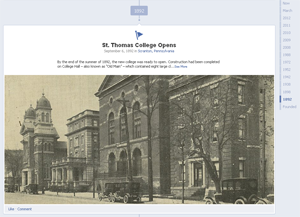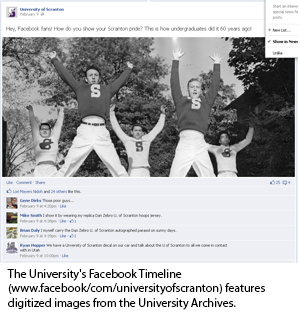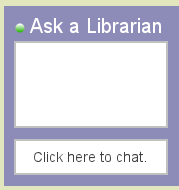Information Update - Fall 2012
Old Information, New Contexts Digital Collections Expand the Use of Archival Material
- Since the creation of the Digital Services department in 2008, the Weinberg Memorial Library's digital collections (www.scranton.edu/library/digitalcollections) have grown into an invaluable set of resources for The University of Scranton community.
- The primary goal of our digital collections is to provide access to unique, primary sources, the raw material of scholarship.
 By digitizing items from the Library's University Archives and Special Collections, we remove an important barrier to access: a researcher no longer has to be physically present in the Library to view and study a document or photograph. While a digitized image cannot and does not replicate the intrinsic value of an archival document, it can act as a surrogate, giving the user enough information to understand what the original item is like without having to come into physical contact with it. Furthermore, via either optical character recognition software or manual transcription, we can also increase access by making our digitized images full-text searchable.
By digitizing items from the Library's University Archives and Special Collections, we remove an important barrier to access: a researcher no longer has to be physically present in the Library to view and study a document or photograph. While a digitized image cannot and does not replicate the intrinsic value of an archival document, it can act as a surrogate, giving the user enough information to understand what the original item is like without having to come into physical contact with it. Furthermore, via either optical character recognition software or manual transcription, we can also increase access by making our digitized images full-text searchable. - As a result, we have observed enormous increases in use of archival material after digitization. For example, a rare book on local history that we digitized in 2008 has since been downloaded almost 5,000 times from Internet Archive. In contrast, the physical book is generally viewed only a handful of times per year. Likewise, a set of historic photographs of Nay Aug Park, contributed by Associate Dean Bonnie Strohl and previously accessible only to her immediate family, have been viewed over 50,000 times since their digitization in 2009. University of Scranton students have benefitted from digital access to unique primary resources as well. One of our students recently wrote a research paper using digitized letters from the Abe L. Plotkin Personal Papers Collection, for example, and last year, Dr. Kathryn Shively Meier's history students studied the Civil War by digitizing, describing, and transcribing letters and newspaper articles from the 1860s (and even a receipt from a surgical amputation) that they found in the Lackawanna Historical Society's genealogical files.
- The rationale for building digital collections extends beyond simply providing access, however. Releasing archival content from physical constraints also allows us to look at it and understand it in new ways. We can create timelines to establish a historical context. We can put our content into geographical context, creating maps that help us understand how physical places change over time. We can organize or filter our content by different topics or factors, to reveal relationships and trends. Most importantly, we can digitally combine our archives and special collections with those of other libraries and repositories, creating new, robust virtual collections for researchers to examine. Already, the Weinberg Memorial Library contributes our digital content to a state repository, the Pennsylvania Digital Library, and we eagerly await the chance to contribute to a nationwide repository in development, the Digital Public Library of America.
- The idea of context is crucial because, as scholars in the emerging field of digital humanities have proven, putting old information into new contexts leads to new arguments and new scholarship. On an even more fundamental level, it leads to new understanding, particularly for our students. When we put primary resources into a new context, we can help students relate their present to the past; we can help them see themselves as a single character in a much larger story, walking, inevitably, in unseen footprints.
-

- New, complex challenges are ahead, particularly in preserving the University's own history. While Library faculty and staff members are continually digitizing materials from the University Archives, we are also conscious that the University community increasingly conducts its work and tells its story in a digital environment. At present, we collect and preserve a small selection of born digital documents, including masters theses, honors projects, and recent issues of The Aquinas student newspaper, and we aim to preserve other born digital University publications in the near future. In partnership with the Division of Planning and Information Resources and the Division of External Relations, we are also exploring ways in which we can preserve the University website and other related web content. As a pilot project, we recently "harvested" for long term digital preservation web pages created for the inauguration of Kevin P. Quinn, S. J. as President of The University of Scranton. While the path forward is not yet entirely clear, we trust that, with the continued development of the Library's digital collections, the "old information" we create and preserve today will bring meaning into some new, future context.
—Kristen Yarmey

